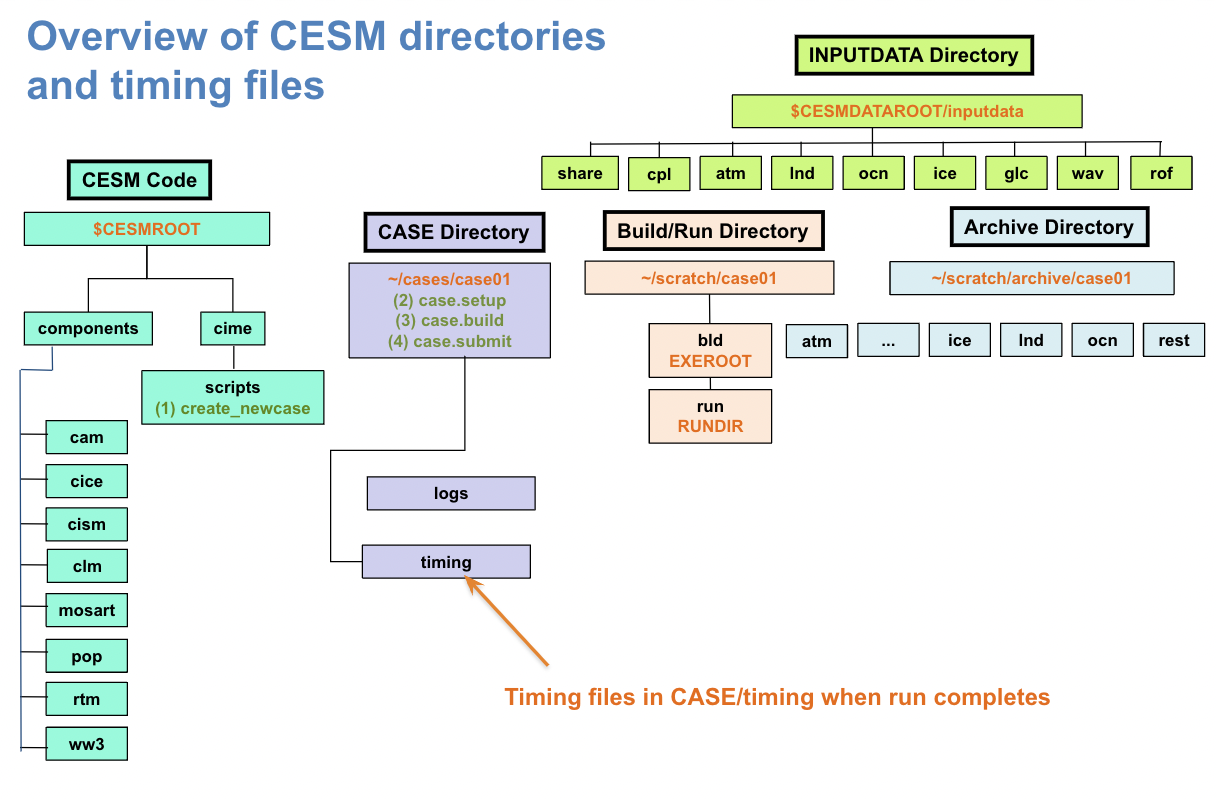Timing files#
CESM generates timing statistics for your simulation, which are important to find out the information you need to set STOP_OPTION, STOP_N, and RESUBMIT to appropriate values when running long simulations.
This chapter explains how to use the timing data to make informed decisions when configuring the variables STOP_OPTION, STOP_N, and RESUBMIT.
Location of the timing files#
Statistics of the timing of your simulation can be found in the directory timing within your case directory.
cd ~/cases/case01/timing
The location of the timing files within the CESM directories is show in Figure 1.
Figure 1: Location of the timing files
Finding information in the timing files#
In the file with the name that starts cesm_timing.case01 you’ll find the following information
Overall Metrics:
Model Cost: XXX pe-hrs/simulated year
Model Throughput: XXX simulated years/day
where
Model Cost is the cost of the simulation in processor element hours.
Model Throughput is how many simulated years you can run in 24 hours.
These files are important to determine how long each submission should be.
Why is it important?#
Typically, you will run your simulations on a system with a maximum wall clock limit for each submission. The maximum wall clock limit represents the longest period (in real time) that you can run a simulation on that system in a single submission.
For instance, when you submit a run to the NCAR’s supercomputer, Cheyenne, it imposes a runtime limit of 12 hours. Ideally, you should select the longest run length that can fit within this 12-hour wall clock limit while dividing the simulation into convenient segments, such as an integer number of years.
